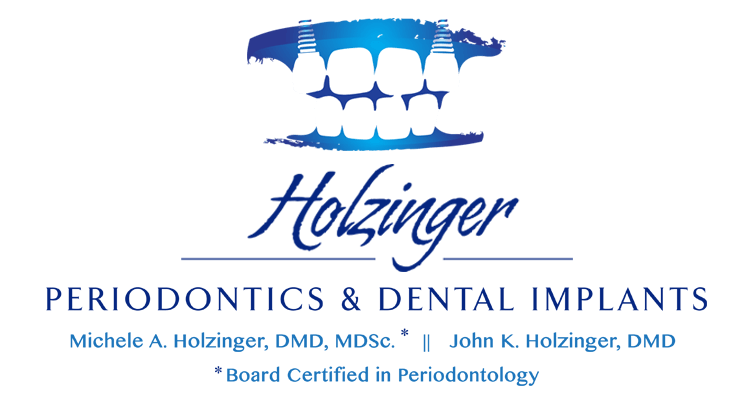Gingival Grafting, also called gum grafting, is a procedure used to thicken your gingiva and, in some cases, to cover recession under your teeth. This procedure is used for a variety of reasons including reinforcing your gums and teeth and for patients that have sensitivity due to recession. There are several procedures that fall under the Gingival Grafting umbrella and your best course of treatment will depend upon the amount of bone and tissue in the area. In this article, we will talk about the different types of grafting and what some of the indications are for each type.
Free Gingival Grafts
Free Gingival Grafts are designed to reinforce your gums in weak and receding places. If you have receding gums, there is a chance that you could lose a tooth since your gums help hold them in place. Your gums also help cover the roots of your teeth to protect them from infection and exposure to open air. A periodontist can take a piece of the tissue along the roof of your mouth, and graft it over your receding gums. When it heals, your gums will be fuller and stronger. Then, you can focus on keeping your gums healthy so that they won’t continue to recede. The purpose of a free gingival graft is to augment the tissue and to try to prevent further bone loss and recession.
Connective Tissue Graft
A Connective Tissue Graft is the most common type of gingival grafting. Instead of taking the outer layer of tissue from the roof of your mouth for the graft, your periodontist will take a deeper piece from the connective tissue layer. Usually with this type of graft, the purpose is to cover recession and to thicken the gingival tissue. Your doctor might do this type of graft if you don’t like the aesthetics in an area or if it is very sensitive to cold.
Alloderm Graft
In certain cases, your Periodontist may decide to use a donor tissue instead of tissue from the roof of your mouth. This type of graft has similar indications as the connective tissue graft, but is great in patients that do not have enough tissue on their roof or are very nervous about taking tissue from that area.
Pedicle Graft
Pedicle grafts also do not involve taking tissue from the roof of the mouth. The periodontist will use a piece of your gums that is next to the spot that needs more tissue and essentially rotate it over to cover the recession. This way helps to maintain the original connection while covering the new area.
The downside to Pedicle Grafting is that you need to have a lot of extra tissue near the area that is receding. In most cases,it is not common to just have recession on one tooth; it will usually affect several teeth next to one another. If the recession is just under one tooth, then a Pedicle Graft may be indicated since the other teeth have more than enough tissue for the procedure.
In the end, the dentist will discuss which procedure he or she feels is right for you and will walk you through the steps.
Preparing for the Procedure
Gingival Grafting doesn’t require fasting or other diet changes before the procedure. After the procedure, you will want to avoid brushing in that area, especially against the area where the graft is secured. You do not want to disturb the tissue that was just placed. For the first day or two, you will also want to stick to softer foods until you feel comfortable returning to regular eating.
Do You Have Receding Gums?
If you feel like you may be a candidate for a grafting procedure, please give us a call to schedule a consultation. At Holzinger Periodontics and Dental Implants, we have the skills and experience to treat periodontal problems. Call our office at (860) 347-8457 to schedule an appointment and get the help that you need.

